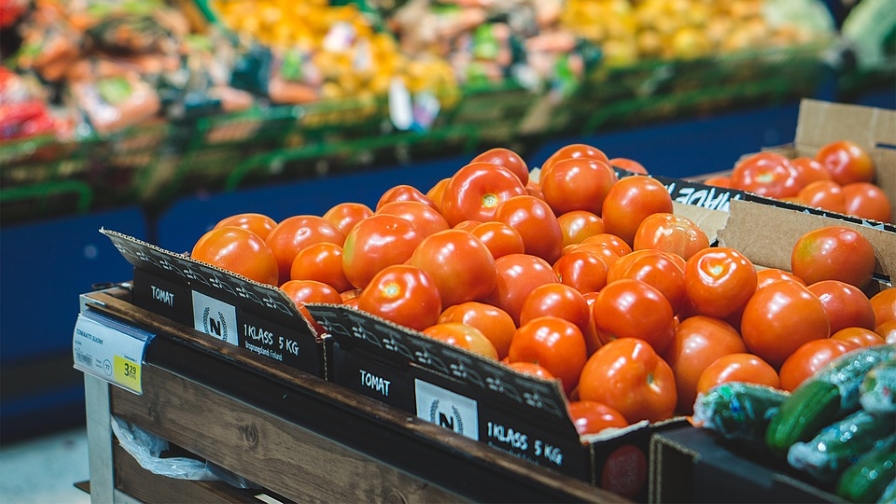Reasons Behind the Growth of Protected Fruit and Berries in the Southeast U.S.

When USDA’s National Agricultural Statistics Service released the results of the 2022 Census of Agriculture in February 2024, one stat that drew attention was the dramatic growth in protected fruit and berry operations. That number nearly doubled from 2012 to 2022 — particularly in the Southeast, with North Carolina leading the way.
But agricultural economist Wendiam Sawadgo, Ph.D., Assistant Professor and Extension Economist at Alabama’s Auburn University, pointed out that area and sales are vital parts to this statistical story.
While the number of protected fruit and berry operations increased over the decade, Dr. Sawadgo reported the area under protection increased significantly between 2012 and 2017, then dropped back below 2012 totals by 2022.
“What’s even more interesting is sales,” Dr. Sawadgo said. “From 2017 to 2022, we saw sales increase from $25 million to $36 million. That’s about a 45% increase in sales of fruits and berries grown under protection, despite area decreasing by 40%. That means the sales per square foot almost more than doubled over that period.”
If your first thought is to chalk gains up to inflation, Dr. Sawadgo said you’d be wrong: “If you look at what the 2017 value would be in today’s prices, it’d be about $2.40 per square foot in revenues. It increased all the way to $5.20 per square foot in 2022, so more than doubling after taking out the price difference.”
What’s driving the increase? Dr. Sawadgo suggested several factors could be in play, including shifts to higher-value fruit crops, such as berry production, or efficiency gains. He added, “We’ve seen as firms are in the industry longer, they’re more efficient at production.”
While these figures reflect national trends, Dr. Sawadago noted the Southeast accounts for much of the growth in fruits under protection. Traditionally, few fruit or berry operations in the region grew in greenhouses or high tunnels. But a change is underway.
The Push for Protection
Auburn Assistant Extension Professor and horticulture researcher Edgar L. Vinson, Ph.D., confirms the move to protected growing for fruits and berries is increasing in the Southeast. Not surprisingly, warming due to climate change impacts key fruit crops significantly.
What may be surprising is the diversity of crops moving toward or exploring protected production. They include peach and strawberry — two of Alabama’s leading specialty crops, both subjects of Dr. Vinson’s research.
Greenhouse strawberry production is on the rise in the region. “I think that really improves the quality of the fruit,” Dr. Vinson said, adding that greenhouse production minimizes diseases common in field production and protects against weather events.
“There are certain climatic conditions, such as excess rain, that can really hamper the strawberry operation. Not many varieties can withstand a lot of rain. In that respect, having greenhouse protection is really beneficial in terms of quality. You can really get some excellent quality from strawberries that are grown in protective culture,” he added.
Even so, the push for protective growing environments is strongest among new growers. Traditional strawberry producers plan to stick to the fields, but Dr. Vinson noted that may change as research dedicated to greenhouse production grows and more large-scale operations follow Europe’s lead.
For peaches, problems run deeper. Climate change is preventing peaches and other temperate fruit crops from receiving enough chill hours to adequately break dormancy in spring. “That’s a growing problem and I’d say an existential threat to the industry,” Dr. Vinson said.
When peach varieties don’t accumulate sufficient chill, harvests are more protracted. “So you have a longer harvest period, but reduced productivity,” Dr. Vinson explained. “A lot of resources go into each harvest. Farmers are paying more, but they’re reaping less from their harvests.” In addition, impacted peaches display less desirable, less marketable sizes and shapes.
To underscore protective culture’s potential, peach also requires an adequate number of heat units, also disrupted by weather extremes. And there’s always the threat of late-season freezes, which can damage or even kill peach blossoms — reducing the yield or eliminating the crop if it happens mid-bloom.
While answers to this dilemma may lie in breeding efforts, growing under protection may mitigate problems as well. On a strictly experimental basis, Dr. Vinson and colleagues have started studying nectarines — which he describes as peaches that lack the fuzz gene — in high tunnel production to see what happens.
One immediate gain is protection from rain, which can cause the fruit to split or be more susceptible to disease. But Dr. Vinson noted adoption is a long way off: “I don’t think there’s anywhere in the Southeast where anyone’s growing peaches under some sort of structure.”
Risk Management Under Cover
For Dr. Sawadgo, who lists agricultural marketing as a special area of research, risk management and marketing help explain the Southeast’s protected fruit and berry growth.
“We are seeing some extreme weather events, heat stress and things like that, driving producers to look for ways to reduce that risk,” Dr. Sawadgo said. On the marketing side, being able to extend the growing season and satisfy wholesalers with a year-round crop might increase farmers’ ability to market in larger volumes.
“We know marketing is one of the bigger issues that fruit and vegetable growers face,” Dr. Sawadgo said, noting larger volumes or year-round production are essential to break out of farmers markets and direct-to-consumer sales and into retail and wholesale contracts.
“It’s a question of what can be grown that’s more profitable,” Dr. Sawadgo said. “Maybe some of those crops that have higher profit opportunity, higher revenues, also have higher risk. So moving into protective growing systems can help them accomplish all those goals in tandem.”
This article is part of the October 2024 edition of “CEAg World Insights.” CEAg World is a Meister Media brand. Click here to view the entire interactive report.









